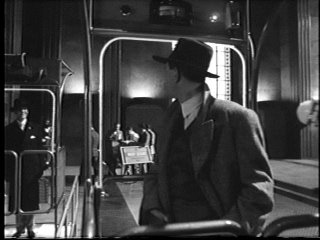Fig. 1. Demonstrating the use of visual allusion in Terry Gilliam's Brazil; here, a reference to the famous Odessa Steps sequence in Battleship Potemkin.
 |  |
Fig. 2. The workplace. Early establishing shots from Charlie Chaplin's Modern Times (left) and Brazil (right).
 |  |
Fig. 3. Entangled in society’s problems. Gears in Modern Times (left) represent the Victorian sensibilities that led to the commodification of labor, and systems of social manipulation based on the control of access to labor (and hence corporate conflict with the unions). Wires in Brazil (right) represent the insights of industrialization (such as innovations in communication and management spawned by the railroads) that led to the commodification of information, and systems of social manipulation based on the control of access to information.
 |  |
Fig. 4. Guards and gates controlling access to labor in Modern Times (left, at a factory); metal detectors and automated ID checks controlling access to information in Brazil (right, at the Ministry of Information).
 |  |
Fig. 5. Closing shots from Modern Times (left) and Brazil (right). In both cases, the protagonists are seen leaving behind them long straight roads across relatively featureless terrain, and heading into scenic mountain country. Note the telephone wires at the road edge in Modern Times, compared to the advertisements at the road edge in Brazil; in either case this detail can be read as prophetic of coming battles or as suggestive of a course of action. In the case of Brazil, the final shots imply a strong cynicism, while Modern Times ends on an optimistic note.
 |  | ||
 |  |
 |  |
Social Criticism in Modern Times and Brazil.
Satire is a popular form of social criticism in part because humor can diffuse attacks on social practices to which audiences are often a party. Modern Times used satire to criticize the industrial infrastructure that keeps so many people in poverty (by controlling who gets to work), and Brazil used satire to criticize the information infrastructure that keeps people ignorant of the ways in which they are manipulated (by controlling what people are able to know about their own lives).
A Contemporary perspective suggests a certain irony in Chaplin’s use of cinema for his critique: cinema was emblematic of industrialization, a marvel of technical innovation and precision, and a cultural phenomena. The manufacture of the image, control of the image, and demand for the image moreover are the sustaining forces of capitalism (brand is image).
Paul Valery suggested that the prehistoric valuation of the image was related to both:
1) the degree to which "prehistoric" representations were abstracted from reality (more valued the less recognizable),
as well as
2) the infrequency with which "prehistoric" peoples encountered images.
The image, photographic media, and the motion picture in particular represent both the bleaching of the sacred from the image (at 24 frames each second, in the case of motion picture film), and the commodification of the sublime (through the mass-re-production of the image, which was originally the product of sacred behaviors).
Moreover, the use of video surveillance systems figure prominently in each film at times, signifying to audiences that it is not lost on the filmmaker that the moving image figures prominently in broad attempts to manipulate society. The two filmmakers seem to have shared a prescient vision of how it feels to live in a society dominated by policing behavior. The Pavlovian manipulation of behavior in either film depicts the effects of the surveillance society on the individual. Each film controls the image to indicate how the image is used to control individuals. The films are not ironic, but cautionary.
It is precisely control that is at issue in either film: each film argues for the rights of the individual, but places the protagonist in an environment that overwhelms him with opposition. Like the protagonist in George Orwell's 1984, the preoccupations of either film's protagonist concern a struggle to find some small bit of private comfort. The protagonist in either film, however, is left with very little control over his own life: the Tramp is continually put out of work, can’t find a place to live, and society wants to deny him his love. Sam Lowry throughout Brazil is in a constant state of confusion, can’t keep his house in order, and society doesn’t want him to love what he loves. Both protagonists take new jobs for the sake of their love; and both protagonists are denied by systems of social control the happiness they seek.
Issues of control in each film center on what each filmmaker viewed as the vital commodity that power structures seek to exploit. In Modern Times, the most important commodity in industrialized society is labor. To regulate the efficiency of the workforce (such as with the automated feeding machine in Modern Times, or in Brazil Sam Lowry’s automated apartment connected to his alarm clock), industrialists sought to control the commodity value of labor by manipulating supply and demand. Of course, demand always increases -- both for access to the means of production and for the product -- but if workers can be made to be more efficient, then the same amount of labor can yield more product, and the retail value of labor itself can be manipulated.
In Brazil, we are shown a society that is regulated like a bureaucracy which controls information to control the cost of controlling the populace. Information retrieval charges, arrest charges, and interrogation charges describe a society that places a premium value on information; at the same time, the movie is populated with characters who don’t know how to perform their jobs, who can’t afford to find out where the Gestapo have taken their loved ones, and who are left without any real information whatsoever, and thus entirely unable to take control of their own lives (because information, in Brazil, IS control).
No comments:
Post a Comment